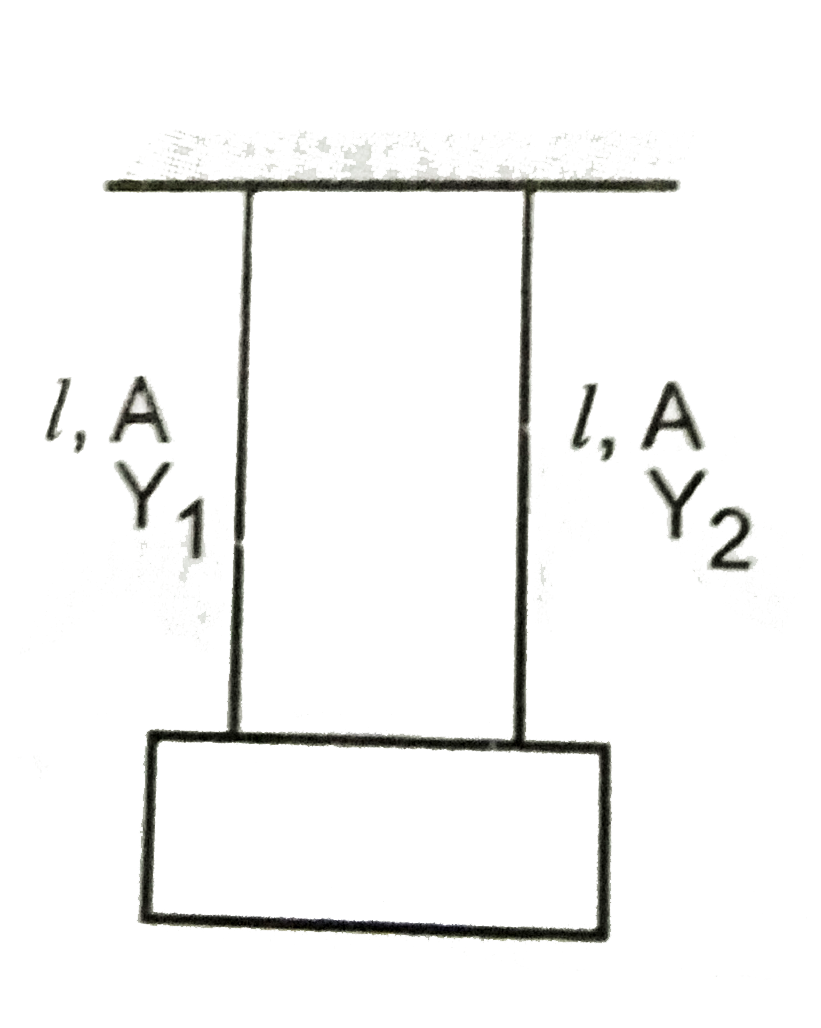In a wind tunnel experiment the pressure on the upper and lower surfaces of the wings are 0.90×105 Pa and 0.91 ×105Pa respectively .If the area of the wings is 40m2 the net liftng forcw on the wing is
2×104N
4×104N
6×104N
8×104N
The correct Answer is:B
To solve the problem of calculating the net lifting force on the wing in a wind tunnel experiment, we will follow these steps:
Step 1: Write down the given data
- Pressure on the upper surface of the wing, Pupper=0.90×105Pa
- Pressure on the lower surface of the wing, Plower=0.91×105Pa
- Area of the wings, A=40m2
Step 2: Calculate the pressure difference
The net lifting force is determined by the difference in pressure between the lower and upper surfaces of the wing. We can calculate the pressure difference (ΔP) as follows:
ΔP=Plower−Pupper
Substituting the values:
ΔP=(0.91×105)−(0.90×105)=(0.01×105)Pa=1.0×103Pa
Step 3: Calculate the net lifting force
The net lifting force (F) can be calculated using the formula:
F=ΔP×A
Substituting the values we have:
F=(1.0×103Pa)×(40m2)=4.0×104N
Final Answer
The net lifting force on the wing is:
F=4.0×104N
---
- Pressure on the upper surface of the wing, Pupper=0.90×105Pa
- Pressure on the lower surface of the wing, Plower=0.91×105Pa
- Area of the wings, A=40m2
The net lifting force is determined by the difference in pressure between the lower and upper surfaces of the wing. We can calculate the pressure difference (ΔP) as follows:
ΔP=Plower−Pupper
Substituting the values:
ΔP=(0.91×105)−(0.90×105)=(0.01×105)Pa=1.0×103Pa
The net lifting force (F) can be calculated using the formula:
F=ΔP×A
Substituting the values we have:
F=(1.0×103Pa)×(40m2)=4.0×104N
The net lifting force on the wing is:
F=4.0×104N
Topper's Solved these Questions
- MECHANICAL PROPERTIES OF FLUIDSBOOK - NCERT FINGERTPS ENGLISHCHAPTER - MECHANICAL PROPERTIES OF FLUIDSEXERCISE - Higher Order Thinking Skills
8 Videos
- MECHANICAL PROPERTIES OF FLUIDSBOOK - NCERT FINGERTPS ENGLISHCHAPTER - MECHANICAL PROPERTIES OF FLUIDSEXERCISE - Exemplar Problems
5 Videos
- LAWS OF MOTIONBOOK - NCERT FINGERTPS ENGLISHCHAPTER - LAWS OF MOTIONEXERCISE - Assertion And Reason
15 Videos
- MECHANICAL PROPERTIES OF SOLIDSBOOK - NCERT FINGERTPS ENGLISHCHAPTER - MECHANICAL PROPERTIES OF SOLIDSEXERCISE - Assertion And Reason
15 Videos
Similar Questions
In a test experiment on a model aeroplane in a wind tunnel, the flow speeds on the upper and lower surfaces of the wing are 70ms−1and63ms−1 respectively. What is the lift on the wing if its area is2.5m2? Take the density of air to be1.3kgm−3
View SolutionIn a test experiment on a model aeroplane in a wind tunnel, the flow speeds on the upper and lower surfaces of the wing are 70ms−1 and 83ms−1 respectively. What is the lift on the wing, if its area is 2.5m2? Take the density of air to be 1.3kgm−3
View Solution
Knowledge Check
The pressure on the top surface of an aeroplane wing is 0.8×105 Pa and the pressure on the bottom surface is 0.75×105 Pa. If the area of each surface is 50m2, the dynamic lift on the wing is
A0.5×104 NB0.25×104 NC5×104 ND25×104 NA plane is in level flight at constant speed and each of its two wings has an area of 25m2 . If the speed of the air on the upper and lower surfaces of the wing are 270kmh−1 and '234 km h^(-1)' respectively, then the mass of the plane is (Take the density of the air =1kgm−3)
A1550 kgB1750 kgC3500 kgD3200 kg
What is the pressure on a swimmer 10m below the surface of lake? g=10ms−2, atmospheric pressure = 1.01×105Pa
View SolutionLiquids A and B form an ideal solution in the entire composition range. At 350K, the vapor pressure of pure A and pure B are 7×103 Pa and 12×103 Pa, respectively. The composition of the vapor in equilibrium with a solution containing 40 mole percent of A at this temperature is :
View SolutionLiquids A and B form an ideal solution in the entire composition range. At 350K, the vapor pressure of pure A and pure B are 7×103 Pa and 12×103 Pa, respectively. The composition of the vapor in equilibrium with a solution containing 40 mole percent of A at this temperature is :
View SolutionK1 & K2 for oxalic acid are 6.5×10−2 and 6.1×10−5 respectively . What will be the [OH−] in a 0.01M solution of sodium oxalate
View SolutionA fully loaded Boeing aircraft has a mass of 3.3×105kg. Its total wing area is 500m2 . It is in level flight with a speed of 960km/h.
(a) Estimate the pressure difference between the lower and upper surfaces of the wings
(b) Estimate the fractional increases in the speed of the air on the upper surfaces of the wing relative to the lower surface. The density of air is 1.2kg/m3.
View SolutionTwo wires of equal length and cross sectional area suspended as shown in

Their Young's modulii are Y1=2×1011 Pa and Y2=0.90×1011 Pa respectively. What will be the equivalent Young's modulus of combination?
View Solution
